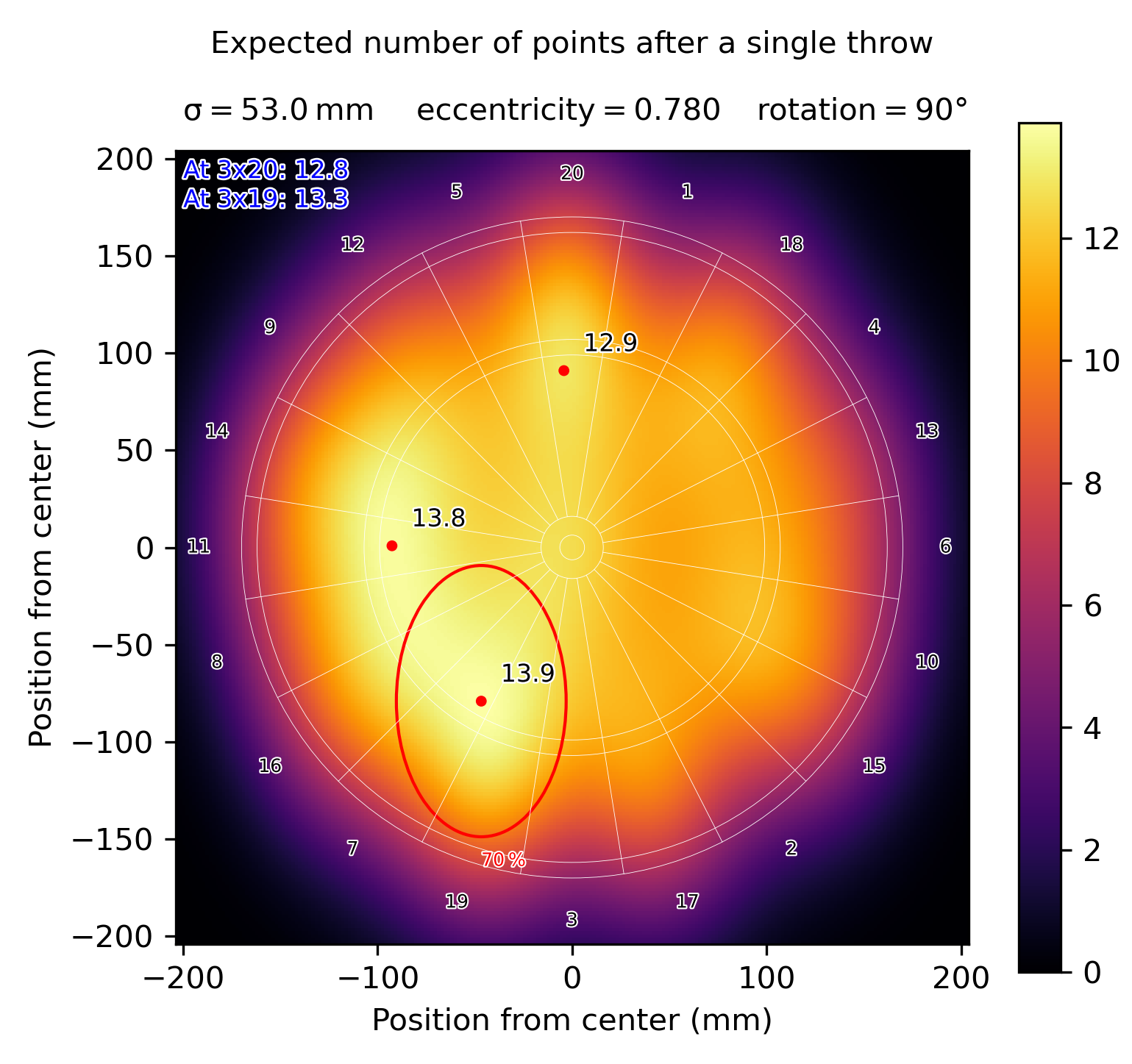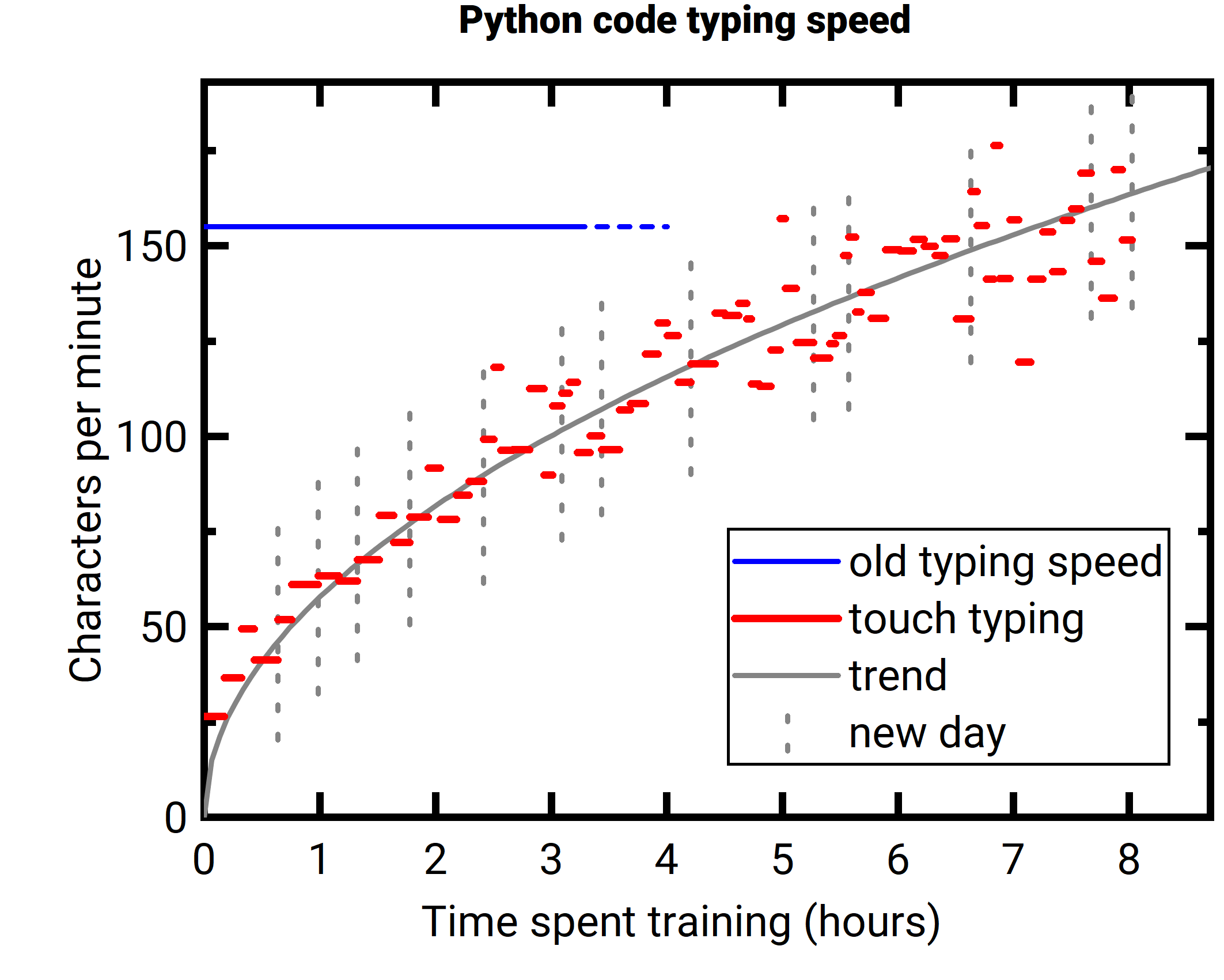Blog?
Darts
March 2021

Darts is a popular pub game. It has one convenient property - beginner players usually are not able to reliably hit the desired area. Even an above-average player targetting 20 points will usually miss, hitting 1 point or 5 points. A significantly worse player still has a chance to hit 18 or 12 points, and one or two lucky 3x20 or 3x18 could give him the victory. That way, everybody sometimes wins, and nobody is discouraged.
Still, there is room for tactics. The first instinct tells to target 3x20, as it is the maximal possible single throw score. Some players may notice, that 19 has higher value neighbors than 20 and they will target 3x19.
What tactics are truly the best? Counterintuitively, for most players, the best results would be achieved targetting somewhere on 7, 16, or 8, slightly towards center relatively to triple points ring. Using the optimal tactics, a player with an average (root mean square) error of 75 mm can play an equal game with a 50 mm player targetting the 3x20! You can explore interactive maps and analyse different throw parameters at Darts Tactics Tool
You can find the best tactics for you, but first, you have to estimate the average parameters of your throws. You can do so in two different ways:
The simpler way is to calculate your average single throw score while targetting f. eg. 3x19 or 3x20 and finding the value of the average throw error that reproduces your score best. You may leave eccentricity and rotation of the throw distribution at their default values, corresponding to average human (according to me and to [1]).
The other way is to upload the photo of the board with visible hit spots and calculate the exact parameters in a semi-automatic manner with my tool. Here you can find more details.
Touch typing
May 2020
updated: October 2020

My first attempt at touch typing was sometime in the middle or high school when I found some software with dauntingly boring typing exercises. I resigned after half an hour or so, disappointed with the endless typing of "a skald asks lads as a sad dad asks"-type sentences. Years have passed with me constantly looking at a keyboard and getting frustrated when forced to write in the darkness. Finally, the beautiful spring of 2020 has arrived. I have managed to find some time for another try, despite my daily quarantine routine being densely packed with doing nothing productive.
This time, I started learning on typing.io, where I typed Python code containing brackets, slashes, mathematical operators, etc. Despite the initial typing speed of about one character per two seconds, the fast day-to-day progress kept me motivated. I tracked my speed and error rate on a handily-drawn graph. Plotting another data point felt like a satisfying reward after each few-minutes lesson (later I upgraded to a paid plan to upload more python code for training and to get full statistics on the website).
I kept training for about two weeks, reaching 8 hours of total practice time. My touch typing speed started to be similar to my former typing speed of 155 characters per minute (when retyping python code visible on screen). Up to this point, I have touch-typed only during the lessons to keep my progress tracking accurate. However, I had some typing-intensive work to do, so I decided to abandon controlled lessons. I introduced touch typing (solely touch typing) into my daily life. After several months, I am still not confortable with special characters and my speed did not improve significantly when typing code. From the other hand, the improvement is much greater in case of common text. Typing became significantly faster and very satisfying.
My progress in typing speed resembled square-root dependence:
chars_per_min = 57.8 * sqrt(hours_of_training)